Doraemon
Confirmed 38,011
Part of a series on Anime / Manga. [View Related Entries]
Doraemon
Part of a series on Anime / Manga. [View Related Entries]
[View Related Sub-entries]
| Navigation |
| About • History • Reception • Related Memes • Search Interest • External References • Recent Images • Recent Videos |
About
Doraemon (Japanese: ドラえもん) is a Japanese manga series created by the manga-writing duo of Fujiko Fujio. The manga was turned into a serialized television cartoon in 1973, 1979, and 2005. The manga and cartoon follow the characters Nobita, a well-meaning albeit lazy schoolboy, and Doraemon, a robot cat sent back from the future by Nobita's grandson. The stories follow Nobita, Doraemon, and their friends as they get into various hijinks due to Nobita's misuse of Doraemon's gadgets. The cartoon is vastly popular in India, with Nobita and Doraemon making appearances in various Indian memes.
History
The original Doraemon series was written by Hiroshi Fujimoto, one half of the team of Fujiko Fujio, under his pen name Fujiko.F.Fujio. It was first published by Shogakukan in 1969 and continued running in various magazines until 1996. The manga centers on a catlike robot, Doraemon, who is sent back in time from the 22nd century to help a young boy, Nobita Nobi, and help change his family's fate. Doraemon has an innumerable number of inventions known as dougu (literally "tool) to use in various situations; in most scenarios, however, the inventions end up increasing the problem, due to several factors, mainly by misuse of the inventions[1].
Anime
Doraemon has been adapted into three different anime series. The first of these was produced by TMS Entertainment and premiered in 1973; due to low ratings and complaints from fans regarding its divergence from the source material, it was canceled after six months. This anime has been poorly preserved and is difficult to find due to the original masters being destroyed in a fire. [2]
Doraemon was not made into an anime again until 1979, when a more faithful adaptation produced by Shin-Ei Animation premiered in TV Asahi on April 2. This anime was more successful and would become one of the longest-running anime, airing 1,787 episodes before its conclusion in 2005. [3]
That same year, TV Asahi debuted a third anime, also produced by Shin-Ei Animation. This anime, as opposed to the previous two, features character designs that more closely resemble the manga's art style. As of 2013, 663 episodes have aired. An English-language version produced by Bang Zoom! Entertainment debuted on Disney XD in July 2014[8].
Reception
Doraemon is considered to be one of Japan's best-known mangas and is considered to be both historically and commercially successful. Doraemon's television adaptations aired to generally favorable reviews across Asia, and have gathered critical acclaim and numerous accolades. [9]
Related Memes
Tanasinn

Tanasinn is a surrealistic Shift-JIS art made in the Japanese anonymous textboard community 2channel in the first half of the 2000s. Its basic form is inspired by that of Doraemon, though its nature is completely unrelated.
Suneo's Bragging Theme Song Remixes
Suneo's Bragging Theme Song Remixes is a series of musical remixes that caused a fad on the Japanese video sharing service Nico Nico Douga (NND) in the summer of 2009. Evoked by its catchy nickname, many hundreds of remixes for that song with no official title were released by creative NND users in a short period of time.
The Last Episode of Doraemon
The Last Episode of Doraemon (ドラえもんの最終回) is an urban legend of this manga with an endless scenario. From the late 1990s to the middle of the 2000s, several fan-made last episodes uploaded on the web were circulation in Japan,
In late 2005, a doujin comic based on one of the fan-made episodes (shown above) was released in the doujin market, selling over 10 thousand copies within 6 months. Because of its extraordinary sales as a fan-made doujin comic, the creator of that manga was sued by the official manga publisher and forced to pay a part of the proceeds from the sales.
Dorasite
Dorasite (ドラサイト), later changed its name to Orasite (オラサイト) and Rasite (ラサイト), is a legendary web page of parody flash movies featuring Doraemon in late 1990s. Dorasite is one of the pioneers of Japanese flash-creation culture, and its spirit of humor had been inherited to 2channel's flash movie movement in the first half of 2000s.
Kuri Manjū Problem

"What the hell are you doing!?"
Among the Japanese science fiction freaks, Kuri Manjū Problem (栗まんじゅう問題) is a famous gedankenexperiment or joke of astrophysics and general relativity, which is derived from the ending scene in an episode included in Doraemon comic book vol.17.
That episode titled "Baibain" ends in a scene where Nobita's misuse of a gadget results in a seemingly infinite supply of Kuri Manjū[4] (a Japanese sweet made from marron). Doraemon solves the issue by putting the sweets and gadget into a small rocket and abandoning it in outer space.
Kuri Manjū Problem is the problem of what will become of that infinitely-increasing Kuri Manjū in cosmic space and whether it will create a black hole and collapse the solar system or the universe. The Japanese Uncyclopedia's article on this problem[5] is a notable account of the concept. It is also said that the storyline of "Baibain" is similar to that of "Sweet Porridge" in Grimm's Fairy Tales[6] and the 1928 novel "Eternal Bread" by Soviet Russian writer Alexander Belyayev.[7]
Search Interest
External References
[2] Wikipedia – Doraemon (1973 anime)
[3] Wikipedia – Doraemon (1979 anime)
[5] Uncyclopedia – 栗まんじゅう問題 (Japanese)
[6] Wikipedia – Sweet Porridge
[7] Wikipedia – Alexander Belyayev
[8] Wikipedia – Doraemon (2005 anime)
Recent Videos 6 total
Recent Images 148 total
Share Pin

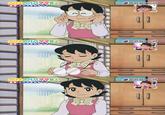
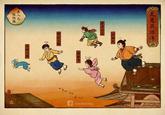


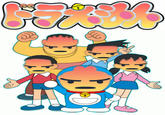





![[GTA:SA] Running Around the world w/ Super Doraemon Pt.1 [GTA:SA] Running Around the world w/ Super Doraemon Pt.1](https://i.ytimg.com/vi/CrONwubamzk/hqdefault.jpg)



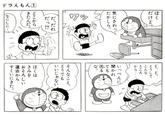

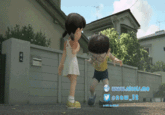

Comments ( 12 )
Sorry, but you must activate your account to post a comment.
Please check your email for your activation code.